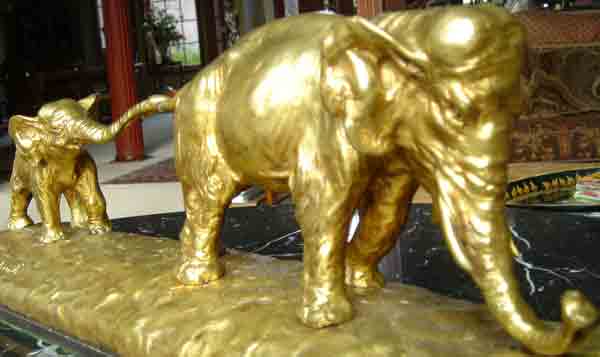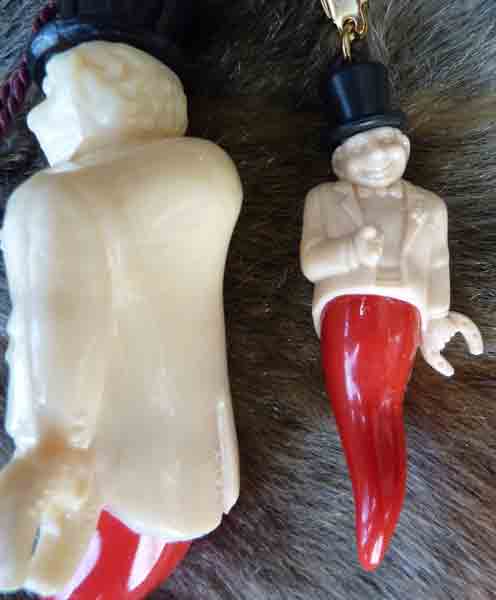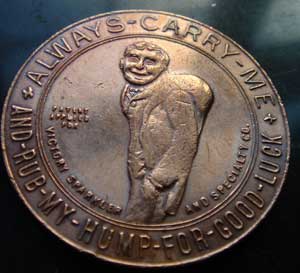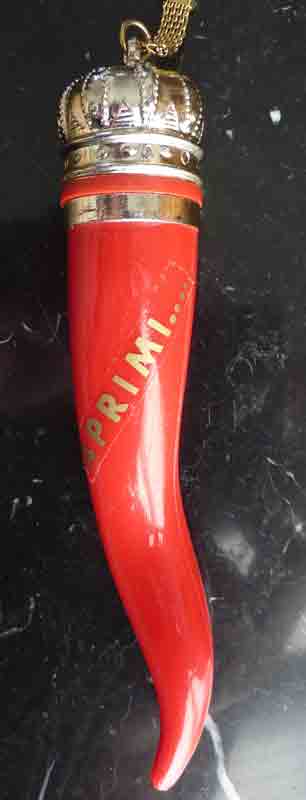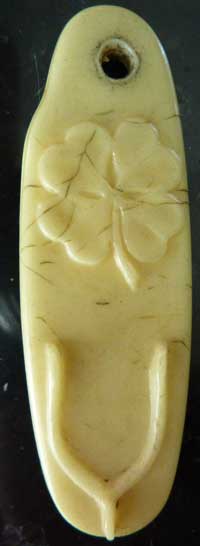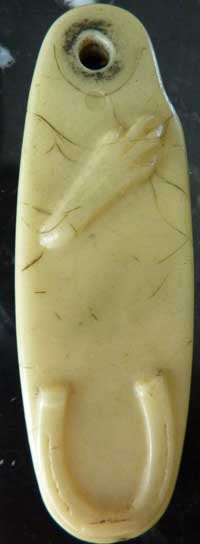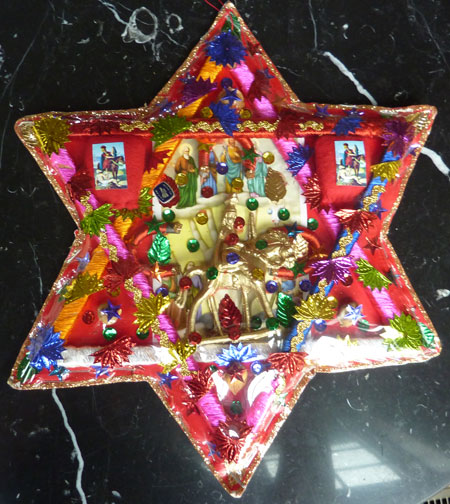Almost every culture has lucky objects, which range from the natural, such as animals, plants and minerals, to representations of the supernatural and imaginary creations.
Animals are often considered lucky. Elephants in particular are seen by many cultures as a lucky symbol. In more recent times the elephant with raised trunk is considered to be even more lucky than elephants in other poses.
Both of these elephant groupings were sculpted by Guido Cacciapuoti, an artist well-known for his sculptures of animals. The one on the left is in gilt bronze and the one on the right is ceramic. In other designs he depicts the “trunk up” pose.
Sometimes only a certain part of the animal is considered lucky, as seen by the use of the coon dong as a charm for luck in love. A similar, but much more extreme example is shown here. This is the oosik, the penis bone of a walrus. It is a common love charm among the Eskimos. This particular example is about 24 inches long.

Another lucky animal symbol is the Japanese Lucky Cat or Maneki Neko, often seen in places of business. The cat beckons customers while holding a coin. The maneki neko on the left is a one-eyed vinyl adaptation made by Read Head toys of Japan.

Another character that is considered lucky, especially in Europe, is the chimneysweep. The image of the chimneysweep is often seen on Good Luck New Year tokens and coins from Germany and Austria. Below is a chalkware plaque, about 6 inches high, that shows a lucky chimneysweep with a four-leaf clover:

White Heather is a Scottish symbol of Good Luck. Some people use it to wish upon, others use it as a wedding flower to bring good luck to the marriage. It has been said that White Heather is so rare there is only about 1 acre of it on the entire Earth. This paperweight hold a large sprig of White Heather. A Victorian locket containing White Heather is shown on the jewelry page.
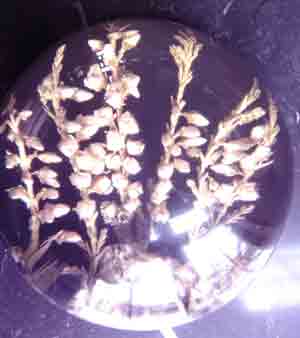
The Gobbo is an interesting fellow. He is an Italian hunchback who considered to be Good Luck. While bodily deformities have historically not been considered to be lucky – in fact quite the opposite – the well-dressed Gobbo is an exception. In 19th century England, to rub the hump of a Gobbo was considered to be a way to gain good luck at the gambling tables in Monte Carlo. Perhaps this connection with posh casinos explains why he is often depicted in top hat and tuxedo, sporting a monocle.
Often the Gobbo is combined with another famous Italian good luck charm, the Cornicello or Lucky Horn. Here are a few examples of current key chains and rearview mirror hangers that feature the Gobbo.
There are many more examples of items covered in lucky symbols. Here is an old pocket knife that is covered in lucky symbols. The small logo says “Tennessee, Agriculture, Commerce” and a keychain that has images of the “Big 4”: horsehoe, clover, wishbone and rabbit’s foot.
Next we have the amazing Pyramid of Luck. Many wonderful good luck items are currently made in Mexico. The pyramid above is one example of the “fixed” lucite creations that include horsehoes and statues that you can see elsewhere in the Museum. Here is another pyramid that contains a small Horn of Plenty, and others.
Like this “package charm” made in Mexico. It contains three horsehoes, saints, seeds, beans, glitter, and lots of red thread. There are many variations on these charms with many different shapes and contents. They are sold for various used such as protection of the house, or increasing business, as in this example.
The Manitas de Abundancia aka the Hands of Abundance is another charm made in Mexico. It contains crystals, toy money and comes with a Spanish prayer to increase wealth.
This interesting charm is from Bahia (Salvador) Brazil called a Penca de Balangandan (literally a cluster of charms). Generally these are small charms worn on a brooch – like a pin version of a charm bracelet. This particular version is a huge one meant to hang on the wall. Various sorts of Brazilian plants and fruits such as cacao, cashew, sugar-apple, Brazilan cherry (pitanga) and pineapple are all represented here. Also included is a water gourd, a matte gourd and a figa fist. The figa is almost 8 inches long.

Want to see more lucky items? Click here to go back to the Lucky Items page.

